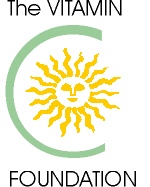El índice glucémico, o IG, indica cuan rápido un alimento eleva el azúcar en sangre.
Los alimentos con alto IG, como el pan blanco o las papas, tienden a producir un pico del azúcar en sangre; mientras que los alimentos con bajo IG, como las lentejas, los porotos de soya, el yogurt y varios granos ricos en fibra, producen un aumento gradual del azúcar sanguíneo.
La cantidad y la calidad de los carbohidratos en la alimentación influirían en la formación de catarata, escribe el equipo dirigido por el doctor Paul Mitchell, de Westmead Hospital, en Nueva Gales del Sur.
Los investigadores analizaron la relación entre los carbohidratos alimentarios y la aparición de catarata en 933 personas de más de 49 años al inicio del estudio y a las que controlaron durante 10 años.
Tras descartar la edad, el género, la diabetes y otros factores que podrían influir en los resultados, cada aumento de la desviación estándar en el IG estaba asociado con un 19 por ciento más de riesgo de catarata.
Las personas que tenían la alimentación con el IG más alto eran un 77% más propensas a desarrollar catarata que aquellas con una dieta con el IG más bajo.
"Dado que los carbohidratos son el elemento alimentaria principal para los seres humanos y que la catarata representa una carga de salud y económica significativa, se necesitan más estudios para conocer si las características del consumo de carbohidratos influyen en el riesgo de aparición de catarata", concluyen los autores.
Nota Publicada: 03/12/2007

